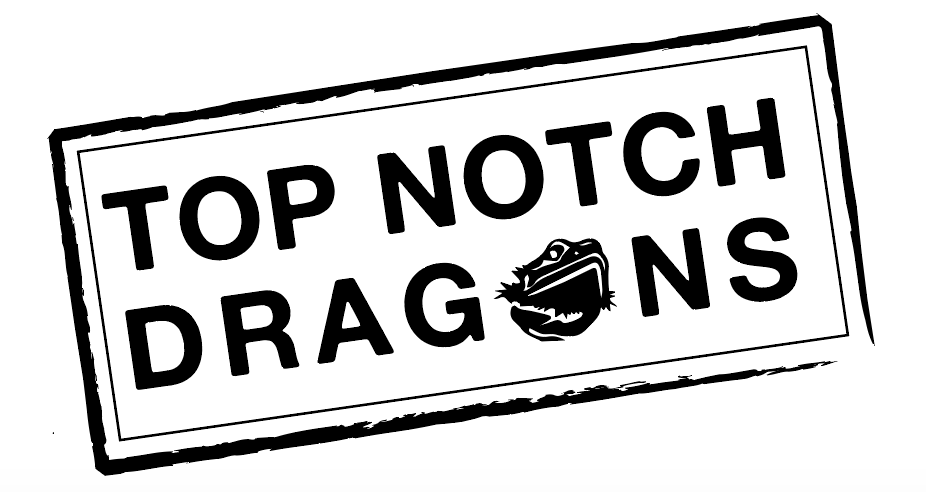Husbandry
HABITAT
From aquariums to terrariums and PVC enclosed cages to custom built melamine cages; there are no shortage of options when selecting the right habitat for your Bearded Dragon. Regardless of the type of enclosure you choose; size substrate and décor all play an important role in your Dragon’s health and wellness.
SIZE
Babies and small juveniles can be housed in 20 gallon (L30¼” x D12½” x H12¾”) aquariums or an equivalent enclosure. Sub adults and adults can be housed in a 55 gallon (L48” x D13” x L21”) aquarium or equivalent enclosure. Since Bearded Dragons are not an arboreal species, horizontal space is more important than vertical space and should be taken into consideration when selecting a home.
SUBSTRATE
One of the most debated subjects concerning Bearded Dragon husbandry is substrate. There are many commercial options including; sand, calci-sand, sand mats, bark, ground walnuts shells, cocoa fibre, paper towels etc. When selecting the substrate that is right for your Dragon, do your research. Sand and other indigestible loose particle substrates have been said to cause death via impaction; particularly in juvenile Dragons. We use paper towels, craft paper and newspaper for all stages of life. These options are cheap and easy to clean.
DÉCOR
Simply put, when it comes to décor; less is more. A minimalist approach may not be as aesthetically pleasing but it is more practical for cleaning and ultimately safer for your Dragon. Crickets will hide in crevices until the lights go out when they will emerge to nibble on your Dragon. A simple basking rock, hide (optional) and feeding dish will suffice.
Bearded dragons (especially adult males) are territorial; males should not be housed together. Females of a similar size can be housed together depending on the size of the habitat. However, pay close attention to any signs of dominant / submissive behavior from either of the cage mates.
LIGHTING/HEAT
Bearded Dragons are a diurnal reptile, therefore when they are kept indoors they require an ultraviolet B (UVB) source in lieu of sunlight. The UVB wavelength stimulates the skin to synthesize vitamin D3 which is essential for calcium metabolism, growth and prevention of Metabolic Bone Disease (MBD). While there are a few lighting solutions available such as; coiled fluorescent bulbs and mercury vapor bulbs, we prefer to use full spectrum fluorescent tubes. It is important to note the distance at which your UVB source penetrates the source. In the case of full spectrum fluorescent tubes, it is 8-12” from the Dragon. These bulbs should be changed every 6-8 months as they lose their effectiveness over time. Alternatively, a Solarmeter can be used to check UVB levels.
As far as heat goes
Light, heat and UVB collectively stimulate the Dragon’s appetite and support digestion. Both the UVB source and heat bulb should be on for about 12-14 hours a day. We use an auto timer to make sure that times we have set remain consistent.
DIET/SUPPLEMENTS/HYDRATION
A Bearded Dragon’s diet is comprised of 3 primary components; protein, vegetation and hydration. Generally speaking; the protein to vegetation ratio is dependent on the animal’s age and size. Babies and juveniles will consume 50:50. As Dragons mature, their vegetation intake increases substantially to 65-75% of their overall diet.
PROTEIN
Crickets are the most common staple protein source for Bearded Dragons and are readily available from many sources. Babies and juveniles have voracious appetites and should be offered as many crickets as they will consume in 20-30 minutes, in small intervals. Do not offer all the crickets at once as this may stress out the Dragon. Special attention must also be given to the size of cricket. They must not be wider than the Dragon’s mouth, to avoid impaction. There is a plethora of alternative feeder insects
Caution:
1. Crickets must always be “gut loaded” before they are offered to you animals.
2. Do NOT recycle uneaten feeder insects to avoid the transmission of potential harmful bacteria.
VEGETATION
HYDRATION
SUPPLEMENTS
All food types should be supplemented with calcium and multivitamins several times a week. The frequency depends of the type of supplement used.
The feeding frequency will vary depending on the age/size of the Dragon. We feed our Dragons 2-3 times per day.


